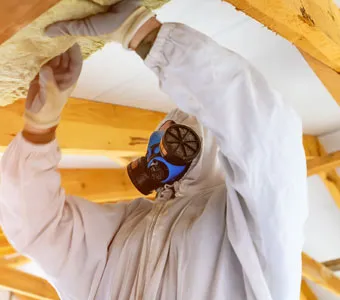Construction Workers at Greater Risk for Asbestos-Related Diseases
Construction Workers at Greater Risk for Asbestos-Related Diseases
Construction is often a thankless job. Workers spend long hours on job sites putting themselves at great risk or worksite injury every day. In the end, a paycheck and the satisfaction of a job well done are the rewards they walk away with. Unfortunately, they may also be walking away with more than they realize.
Statistics indicated construction workers, including electricians, are at greater risk of developing lung cancer, asbestosis and mesothelioma due to exposure to asbestos on job sites. A naturally occurring fibrous mineral that was regularly used in construction until the 1980s, asbestos was often present in:
- Flooring
- Drywall/plaster
- Insulation
- Roof panels
- Ceiling tiles
- Boilers
- Circuit breakers
- Thermal paper
As a commonly used construction material, workers came in contact with asbestos nearly daily. When the building materials were disturbed, the asbestos fibers would separate into fine particles that were easily breathed in or eaten. The fibers would also attach themselves to clothing and shoes and travel home putting family members at risk of ingestion as well.
Once the fibers became lodged in the tissues of workers and/or their families, years would pass before any symptoms would manifest. Unfortunately, by the time the asbestos-related diseases have taken control. Treatment options for diseases such as mesothelioma are limited and hope for a full recovery is often futile. In fact, treatment is often limited to making patients as comfortable as possible during the time they have left to live.
Because of advances in synthetic building materials and concerns for the health and safety of construction workers, asbestos is no longer used. However, it may still be present in homes and other buildings, leaving families and remodelers at risk if the asbestos is disturbed. To minimize risk, the Environmental Protection Agency (EPA) and the Occupational Safety & Health Administration (OSHA) have developed regulations and standards employers must observe. These safety precautions include instituting engineering controls to reduce airborne levels and requiring crews to wear protective gear.
If a worker, and/or the family of a construction worker, believes asbestos exposure has occurred, or if a diagnosis of mesothelioma has been made, it is important to seek and follow medical treatment. It may also be wise to consult with an attorney experienced in handling workplace injury cases including asbestos-related injuries.







